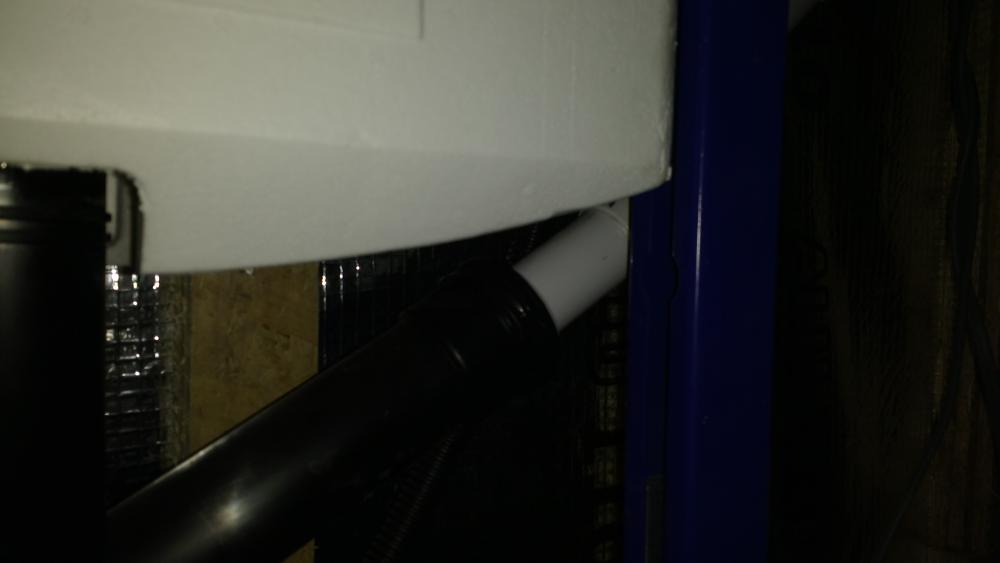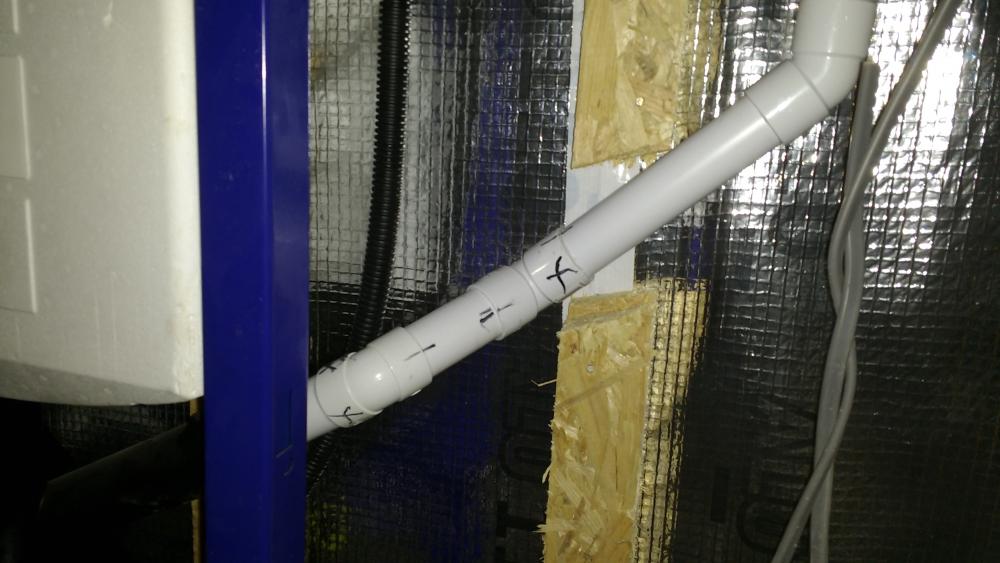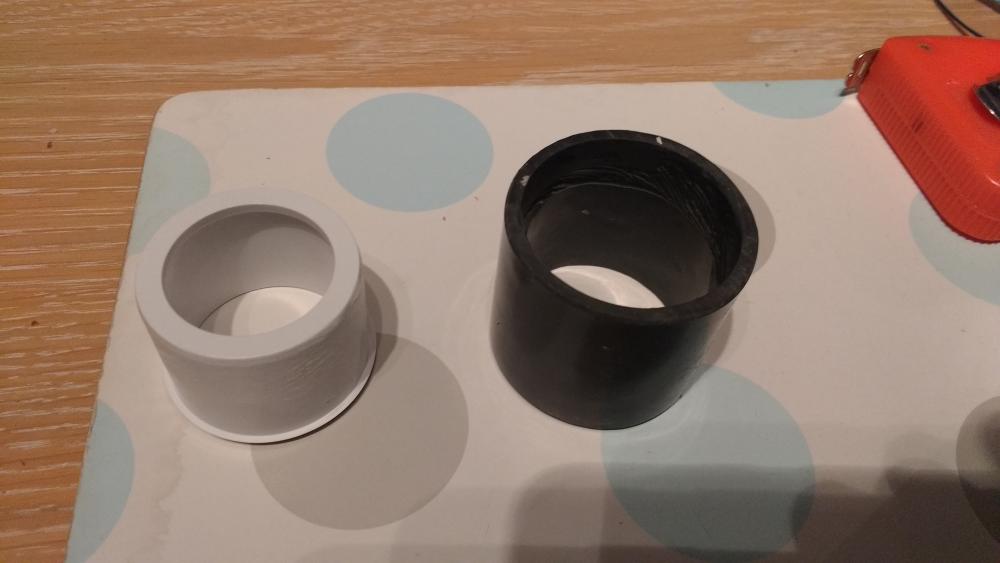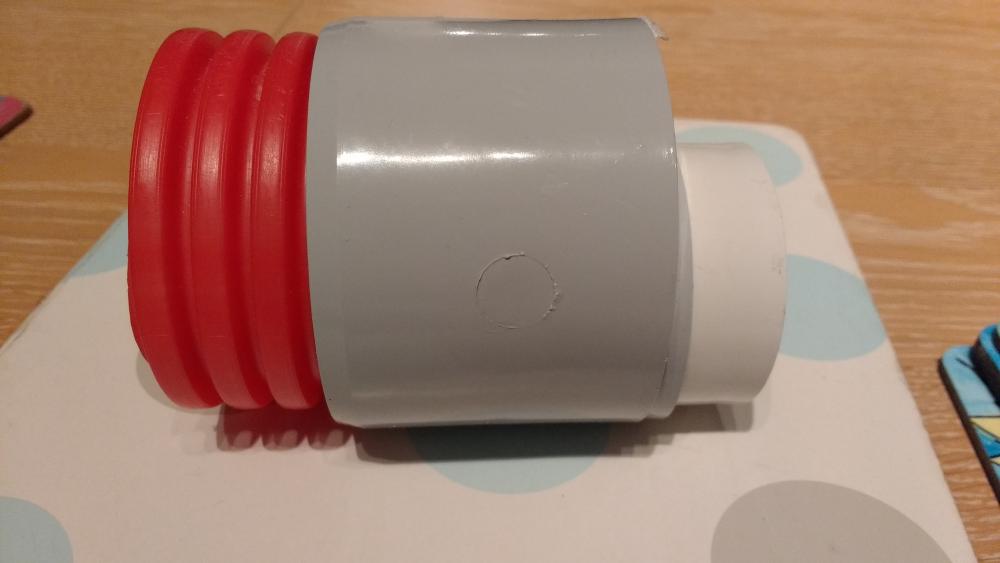Leaderboard
Popular Content
Showing content with the highest reputation on 12/28/16 in all areas
-
A couple of factors at play here. Housing stock and its price may not reflect need. So yes there are houses on the market but, in general, they are too large and too expensive for first time buyers or for people working in the few local industries. If nobody who lives and/or works in the area can afford the house, then it is overpriced, simples. Part of the original statement by Alasdair Stephen is that it costs so much to build a new house today. What @ProDave considers so ridiculous as to be impossible, that is, negative equity for new builds, is simply taken as fact in some parts of the Highlands (Alasdair singles out Lewis in his statement). This is not a new problem- many houses built under the croft house grant scheme would likely be uneconomic if built without the grant. If you plan to pass it on to your son, market value is not really important anyway. A further point is that the Highlands is not a monolithic entity. I can't claim to have first hand experience of the whole area, but I have lived approximately a decade of my life in each of Argyll, Easter Ross, and Lewis, and have been in Skye now for around four and a bit years. The housing, employment, and general economic conditions are not identical in each of these areas (nor is it identical within these areas). The economy within commuting radius of Inverness is very different to, e.g, Tiree or Kinlochbervie. Anyway, I'm not sure what can be done to lower the cost of building new houses in the areas where this is needed. Access to building land is obviously crucial. Placing some form of tie on a house is possible. I think it could be hard to do much about the actual building cost though, without going back to the old days. But it would be a very interesting discussion to have perhaps on another part of the forum.2 points
-
I saw this doing the rounds on Facebook a few weeks ago, and actually meant to post it on the forum myself. It's received a fair bit of attention, with the original post being commented on by various local worthies (Councillors, MSPs, people in the industry etc) as well as coverage in the local paper. It's an issue fairly close to my heart- I used to do research work in rural development and population movement. And of course I have lived in rural Scotland all my life, and been one of those who watched in despair as property prices went through the roof in the early 2000s just as I had left home and was contemplating the near impossibility of buying something myself. Is there a problem? Yes, of course there is. The outflow of young people from rural areas cannot be sustained indefinitely and the demographics of many rural areas are changing, with an increasing proportion of part-time or retired residents. This then has a knock-on effect on the whole economy and becomes self perpetuating, as businesses move out of the area due to lack of suitable workforce. A fair number of the fishing boats rely on migrant workers from eastern Europe or the Phillipines these days. With traditional industries dying out, we risk seeing a gradual 'museumificiation' of the Highlands which is a very sad vision indeed. And eventually the overgrown and empty crofts will cease to resemble the (entirely man made) environment that visitors to the area expect to see. If this all down to housing? No. It's what happens when young people want to go and do something 'better' than their parents did, and when their local area doesn't offer anything. In some of our studies as the UHI, we discovered evidence of a cultural phenomenon where staying in your birthplace equated with failure- the product of generations of people being convinced that the only way to 'better yourself' was to leave. I think this attitude may be changing, helped in part by the diversification of employment that remote working brings, and the growth of interest in small self employed niches. I can think of a small number of people who have deliberately moved back to their rural areas to take a significant risk in starting up e.g. craft or outdoor sports businesses. Does housing play a role? Yes. There is a mis-match between the available employment opportunities and the market value of housing. Market value is distorted by the wealth of people moving into the area with deeper pockets. In some of the prettiest spots, e.g. Applecross, all the cute little traditional cottages are bought up by retirees or holiday home owners. If the only job you can get is cleaning or hotel work, how can you compete with someone who has just sold their ex-council flat down south for a six figure sum? The current mortgage situation does not help either. Whilst interest rates are next to zero, it is extremely difficult to persuade a bank to lend you money based on a seasonal minimum-wage job or an unproven new business idea. So what can be done about housing? Two things, fundamentally. One is to control the existing supply in such a way that houses become available to those who it is necessary to retain in the population, i.e. those of working age and young families. But this is fraught with difficulties. People are used to ownership as being an absolute right. Crofting tenure is about the only example I can think of where failing to meet certain conditions can result in your rights being taken away. Something similar could be extended to housing in general but I would expect fierce resistance. So the other option is to build more houses. There is no shortage of land. In some ways that makes things more frustrating. It is understandable that in the middle of a city a plot might cost hundreds of thousands, due to physical scarcity of parcels of land. But up here the scarcity is artificial. and is entirely a product of the combination of land ownership and planning policy. Finally, the actual build route/method and its impact on cost. This is not as big a factor as availability and price of plots, but will have some bearing. The cost of building a house has risen, as I'm sure we could all agree. Materials are up, the standard that must be met is up, people's expectations are up. On my own build I have been surprised at how large some of the unavoidable costs have been- water connection, planning fee, road related permits. From my point of view it does feel as though house builders are being milked to some extent by the cash-strapped council. It is possible, though, to buck the trend. I know a couple of people who have built very nice houses indeed at impressively low costs. It helps if the land is your family croft, and therefore free. It helps if you are under 40 years old and qualify for the higher rate of croft house grant. And it also helps if you are a tradesman whose old school mates are also tradies, and you can count on almost free labour for your project, as well as trade prices on materials and first sniff at good deals or surplus. This attitude of helping one another out is a defining characteristic of crofting communities, and just one of the things we are at risk of losing. Anyway, sorry for the essay...2 points
-
This topic has been around for a while and I think weighted *naturally* by you guys that are clever and experienced self builders. Sensus is well able to stand his own ground and has a fairly *back at you* style. I'm looking forward to a rich feisty dialogue but please guys keep it measured, we all know what we know. In my line of work *learning disability* we have a saying. All of us are whole but none of us are perfect.???2 points
-
I have completed the connection of Geberit to MVHR, so here is the detail FYI. There seemed to be interest in the JSH and PeterW versions. Plasterboarding and second fix is delayed, so the fans are not yet functioning, so the ventilation performance is as yet unconfirmed. Geberit model #111.353.00.5 has a Y-branch for extraction of air[smells]. I removed the translucent plastic duct [part of the Geberit] attached to the Y, cut off and Siga taped up the end that linked to the top of the water tank. Into the Y was inserted an adapter from 50mm Euro to 1.5" UK [RHS: the most expensive piece of kit in the house @ £12 for a short piece of tube that was 50mm ext and 43mm int diam], followed by two UK reducers. This led via various slow bends through the house in 32mm waste pipe to near the MVHR unit, where it was connected into the standard radial ventilation pipe. 32mm waste pipe was used as it fitted within the service void and was generally unobtrusive and easy to slip in. I did not see that a large diameter pipe was necessary, nor would it have been easy to fit another 75mm pipe in. http://www.sanifix.co.uk/conversion_fittings.html Connection to the ventilation pipe was via 50-43mm and 43-32mm reducers [white] and a 50-82mm reducer [grey], which fitted neatly into the ventilation pipe with a rubber sealer ring. Any questions please ask.1 point
-
The negative equity on new builds thing is, I think, happening in two different ways. You have the (relatively) highly desirable areas like the Sleat peninsula with its £80k plots, which appeals to incomers with deep pockets, who are financing their dream house through the sale of one in a higher value part of the UK. Often older or retired people. They may wish for a very high specification, and may not fully appreciate the local ceiling values, or simply not care about them. If it's going to be your last ever house, what does the finished value matter? If it's your dream house, aren't we all guilty of letting the budget slip a bit? Alternatively, you have the local 'stayers' or 'returners' who want a basic but decent modern house in their chosen area, so that they can live close to family, work the family croft or business, etc. Again, they are building what they want and need, this time to a lower budget, and again the final sale value is not really part of the equation, because they are not planning on going anywhere. I do think that there is currently an abundance of overpriced plots on the market, post crash; as @AliG points out, this reflects sellers failing to adjust to current market conditions. Perhaps they are all holding out for that Grand Designs buyer with big dreams and deep pockets. Occasionally a plot sells, so I can see why people hold out if they are in a position to do so. But there aren't enough of these buyers, and it makes things tough for the rest of us with more realistic budgets. As to build costs, I could compare my 1976 Department of Agriculture bungalow with a modern house to give one example. My house is sturdy, but undoubtedly was cheap to build. Single glazing, storage heaters, quality of finish very poor by today's standards (walls and ceilings are not even taped, let alone skimmed. You can see every joint and nail. Cheap doors, skirtings, etc.) The foul drainage pipework is far too shallow to meet current regs and has no access points. The road crossing is at a depth of about 300mm, not today's 700. The septic tank and soakaway is a joke by modern standards, just a pile of stone really. The access and bellmouth is nonexistent, the house is basically built beside a layby on the road. The electric supply is a cable six inches below the lawn, and not in a duct. As originally built, there was virtually no insulation. Cold bridges and air leaks everywhere. Some of these factors can be avoided with better design and only marginal extra materials cost. But other ones are more significant. On the new house, I will have spent about a third of the budget on drainage, access, and laying services- all elements that if done 'the old way' would have cost a fraction of this. However, I would not advocate a return to the old fashioned standards. If we consider that houses should last for several lifetimes, and if we can agree that investing in more efficient housing is a good thing, then perhaps there is a case for more government intervention or support to enable that standard to be met. It is a long term investment, and not something that the open market is able to do by itself.1 point
-
Technical Note No.9 here is interesting: http://www.gobrick.com1 point
-
If I recall a visit I made to a local tile maker the press the lettering in after the tile was formed, I guess it ensures you get the full dense block rather than any gaps around letters where the clay has not gone. Also don't forget - grandma & eggs, to get the letters the right way round on the board / mould bottom. so the text comes out correctly.1 point
-
Careful as that's the recipe for adobe bricks, not ordinary soft clay..!! 20-30% sand at most in a red brick1 point
-
Great start! Just re-read that link I posted about the brick making. Presumably you'll add sand to achieve 30% min / 50% max sand content? What sand would that be do you reckon? And 7 days at 1800 degC!1 point
-
Everything has to start somewhere So far iv got me some clay!1 point
-
'Help out or die slowly' is the title of a picture we brought at the young Scottish contempories Exhibition in London last year. The artist is 25 and 'gets it' as you have described big time. Although he is based in Kirkentolch. Your piece is very cogent and speaks volumes on the challenges you and, because of our wider interdependence - everything is connected to everything else, the rest of us face. The problem is, as you have described, rampant self interest and the accompanying decay in the ideas of community and society.1 point










